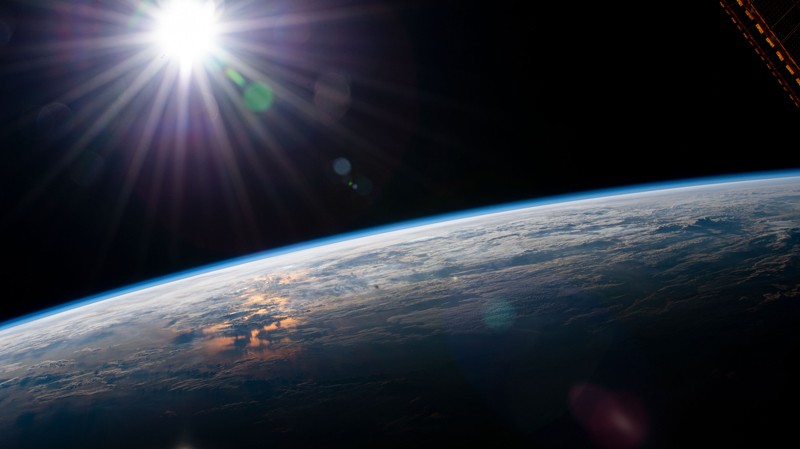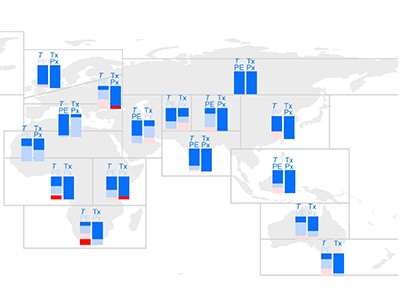By at least one measure, US President Joe Biden’s online climate summit last month was a success: several governments, including that of the United States, made fresh pledges to reduce greenhouse-gas emissions. Combined with earlier announcements from other countries and the European Union, these pledges would reduce emissions in 2030 by the equivalent of more than 3 billion tonnes of carbon dioxide, more than the current annual carbon emissions of India. But even this reduction — if achieved — would not be enough for the world to remain on a plausible path to limit warming to 1.5 °C relative to pre-industrial times.
World leaders must look for ways to close that gap at the United Nations climate convention in Glasgow, UK, in November, and then implement their commitments. Clearly there is a long and difficult road ahead. So governments and scientists must continue evaluating carbon capture and other climate strategies that can be used to remove carbon dioxide from the atmosphere. They should also explore solar geoengineering, which involves altering clouds or adding reflective particles to the stratosphere to reflect sunlight back into space and cool the planet. The effect of such stratospheric injections would be similar to the cooling that happens after volcanic eruptions.
Some studies suggest that solar geoengineering could provide much-needed short-term relief if global warming becomes unbearable (P. Irvine et al. Nature Clim. Change 9, 295–299; 2019). But technical, environmental and ethical questions remain, including how to ensure that the cooling works as desired — and who decides the setting for the thermostat. And then there are the potential knock-on effects, which could vary across regions and sectors of society (J. Proctor et al. Nature 560, 480–483; 2018). More research is needed to understand these issues.
Some scientists are vociferously opposed to solar geoengineering, which could go awry in unpredictable ways and, once started, could be difficult to safely shut down. There are also concerns that even a move to research solar geoengineering creates ‘moral hazard’, leading to misplaced confidence and detracting from efforts to rein in greenhouse-gas emissions. Some who oppose it fear that once research begins, the roll-out of the technology will be unstoppable, no matter what the findings.
Researchers who study geoengineering counter that the science needs to be understood, and that the world must consider the thorny questions of international governance that would arise if a country moves forward with an ill-conceived programme. But researchers have struggled to raise funding, conduct experiments and address legitimate concerns about their work.
In March, scientists working on the Stratospheric Controlled Perturbation Experiment (SCoPEx) had to cancel a balloon flight scheduled for June in Sweden. The flight, designed to test equipment that would be used in future experiments involving the release of particles, faced opposition from environmentalists and representatives of northern Scandinavia’s Sami communities, who argued that geoengineering research is a distraction from other work on climate change. An advisory committee recommended delaying the flight to allow for further public engagement.
Until now, public bodies have not prioritized reaching such a consensus. But two welcome developments suggest there is potential for this to happen.
The US National Academies of Sciences, Engineering, and Medicine recommended in March that the US government establish a coordinated federal research programme to investigate solar geoengineering. It is the most explicit call yet from a major scientific body for a government research programme, and comes at the right time.
Costing US$100 million to $200 million over 5 years, the multi-agency programme would explore the core environmental science of altering clouds or releasing particles on a large scale, as well as the ethics and public perception of this technology. The proposal includes a code of conduct, and a public registry for research proposals and results. The academies also called for broad international engagement, information sharing and discussions about global governance. This is crucial: solar geoengineering would affect the entire planet, and the United States must not go it alone.
There is also progress on the international front. The Carnegie Climate Governance Initiative (C2G), an advocacy group based in New York City, has been working to engage the UN on solar-geoengineering research and governance issues. In March 2019, environment ministers debated a resolution calling on the UN Environment Programme to assess geoengineering science and technology. That measure failed, in part because of opposition from the administration of former US president Donald Trump. Switzerland and other countries are preparing to bring forward a fresh resolution next year. And C2G is working to have solar geoengineering discussed at the UN General Assembly in 2023.
There are models for how to promote the collaboration sought by the US national academies. One is the Solar Radiation Management Governance Initiative, which promotes and funds solar geoengineering research in the global south. The organization has sponsored workshops in 14 countries and, since 2018, has paid out more than $430,000 to fund research in eight countries, including Bangladesh, Iran, Benin and Jamaica.
Solar-geoengineering research brings risks, and there are other, more-promising ways to address global warming. But the world remains on a path to dangerous climate change, and future generations will bear an increasing burden. Governments need to step up climate efforts, and evaluate all possible options for action. If solar geoengineering is harmful, leaders will need evidence so that they can rule out the technology.
"Give" - Google News
May 12, 2021 at 06:26PM
https://ift.tt/3hjv1hA
Give research into solar geoengineering a chance - Nature.com
"Give" - Google News
https://ift.tt/2YqGX80
https://ift.tt/2YquBwx
Bagikan Berita Ini

















0 Response to "Give research into solar geoengineering a chance - Nature.com"
Post a Comment